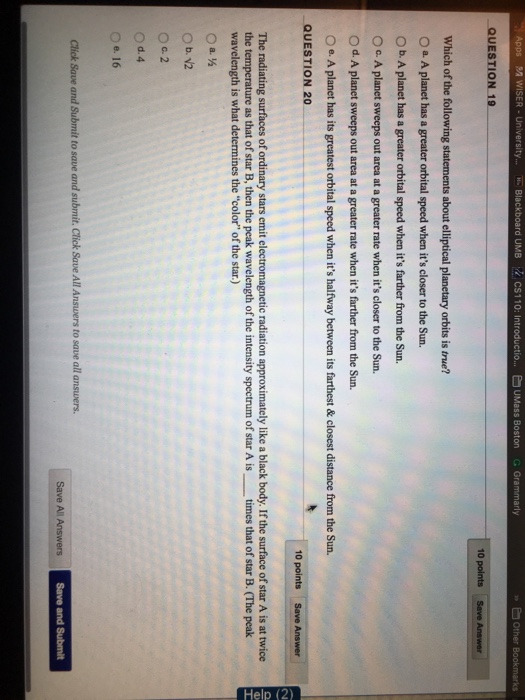(SOLVED) Astronomy- Elliptical planetary orbits
Discipline: Astronomy (and other Space Sciences)
Type of Paper: Question-Answer
Academic Level: Undergrad. (yrs 3-4)
Paper Format: APA
Question
Apps A WISER-University.... E Blackboard UMB k.cS1 10: Introductio UMass Boston QUESTION 19 . Grammarly Which of the following statements about elliptical planetary orbits is true? O a A planet has a greater orbital speed when it's closer to the Sun. O b. A planet has a greater orbital speed when it's farther from the Sun. 0 2 A planet sweeps out area at a greater rate when it's closer to the sun. O d. A planet sweeps out area at a greater rate when it's farther from the Sun. e-A planet has its greatest orbital speed when it's halfway between its farthest&closest distance from the Sun. QUESTION 20 The radiating surfaces of ordinary stars emit electromagnetic radiation approximately like a black body. If the surface of star A is at twice the temperature as that of star B, then the peak wavelength of the intensity spectrum of star A is times that of star B. (The peak wavelength is what determines the "color" of the star.) 0d.4 Oe, 16 Click Save and Submit to save and submit, Click Save All Answers to save all answers. Save All

Expert Answer
a) Since angular momentum is conserved
So star has higher speed when closer to sun
b) it will become half since product of temperature and radiation is constant.